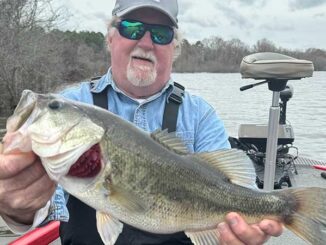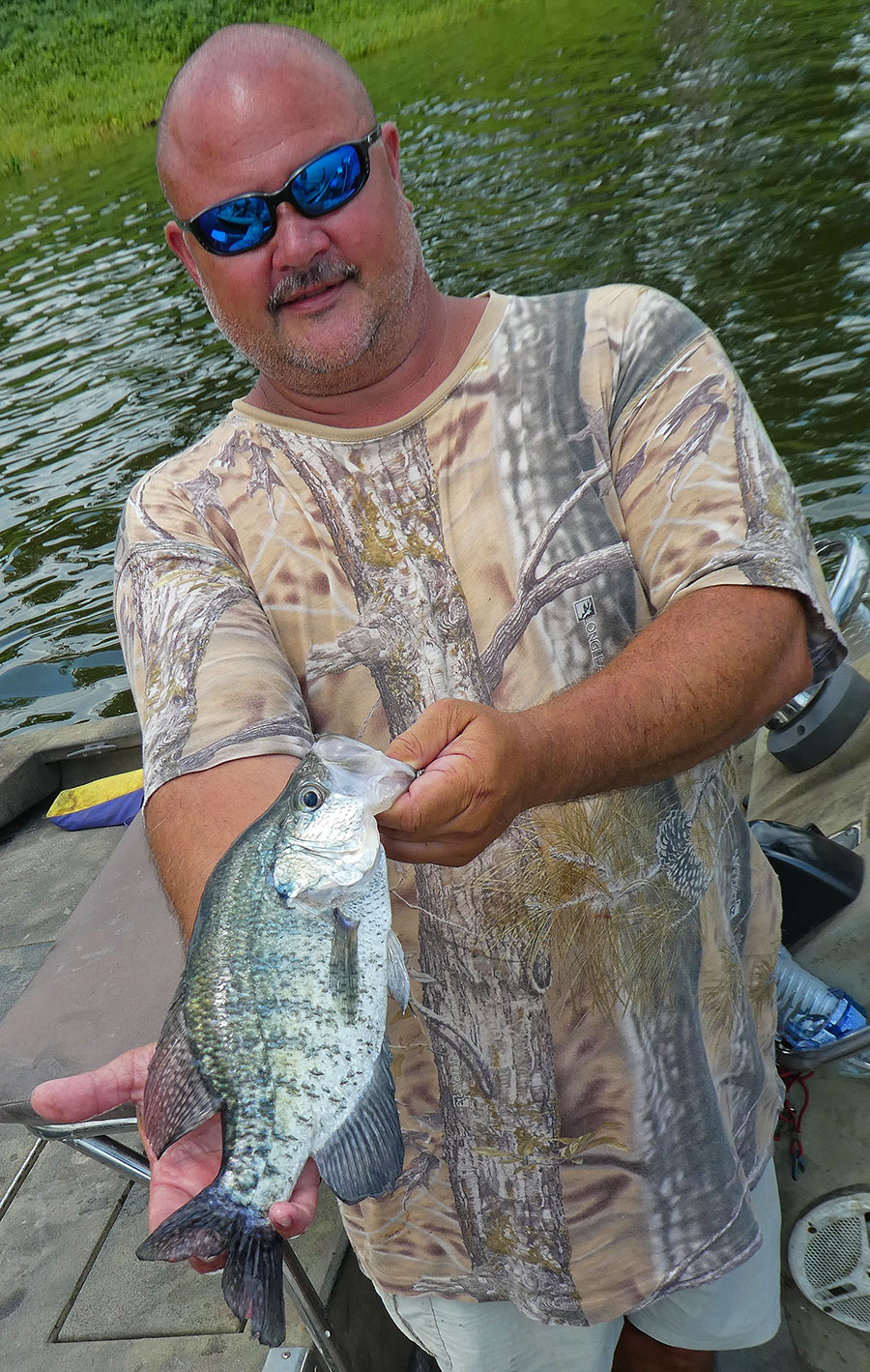
Fun, relaxation at this Mississippi River “resort” means catching fish
When most people say they’re heading to the Yucatan for fun and relaxation, they mean to the Cancun resort on Mexico’s Yucatan Peninsula. In Louisiana, however, they might just be going to Lake Yucatan near Newellton.
This 2,421-acre oxbow lake is a former Mississippi River channel. Sitting in the Mississippi’s alluvial floodplain, its waters are rich in nutrients and the Mississippi restocks it with fish every time it floods.
Gene Lachney owns Yucatan Landing, the only public boat launch on the lake, and is its biggest promoter.
He proudly claims, “Several years ago, a biologist tested the water and said it was the purest water in the state.”
This may be because much of the Mississippi’s water that overflows into the lake gets filtered out by passing through acres of willow trees.
The annual floods are a two-edged sword, however. On one hand, they flush out the lake and restock it with fish, but on the other hand high water can cut off access to Yucatan Landing. According to Juanita Lachney, Gene’s mother, “When the water reaches 36.5 feet at the Vicksburg gauge, it floods our only access road.”
But what goes up, must come down, and when the water starts getting below 22 feet in the late spring, the fish turn on. While the Yucatan has a healthy population of bream and catfish, most anglers target largemouth bass, white bass and crappie.
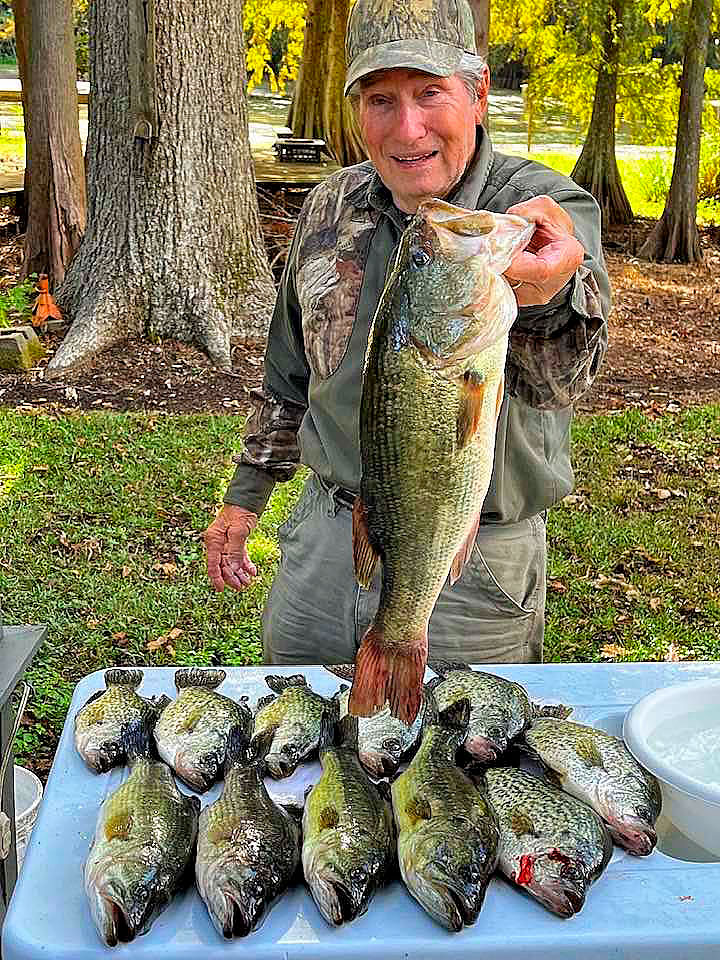
Largemouth bass
According to Lachney, bass fishing kicks off along the bank when the Vicksburg gauge falls below 22 feet and is best at 12 or 13 feet.
Mrs. Lachney recommended using a purple or plum worm on a Texas rig when fishing the banks, especially when the weather warms up. As she puts it, “They want that worm in the summer.”
A white and chartreuse spinnerbait is also a good choice.
There are miles of shoreline to fish on Yucatan but one doesn’t have to go far to catch a mess of bass. Lachney remembers one bass tournament when all of the big boats roared away in different directions when the signal was given.
All but one, that is.
“One old fellow was in a jon boat and waited until everyone had left,” Lachney said. “He then started fishing from the launch and just worked his way down the bank from there. That old guy ended up winning the tournament.”
Lachney said the best time to bass fish along the bank is when the water is on a slow rise.
“The bass sense that the water is moving up and will cover shallow areas with fresh grass and food,” he said.
Lake Yucatan is 70 feet deep in places, but its underwater slope is not straight down. Instead, there are occasional humps and shelves that gradually go down to the deepest holes. These irregularities are another good place to look for bass.
Mrs. Lachney recommended a particular spot about three-quarters of a mile to the right of the landing where a large culvert drains the backswamp. Out from the culvert is an underwater hump.
“This underwater mound has been built up from the silt dumped into the lake at that point,” she said. “Back off from it a ways and cast to it and work your bait down the slope.”
Lake Yucatan is not known for double-digit bass, but fish of respectable size are pulled from it regularly. Mrs. Lachney believes the lake record is around eight or nine pounds.
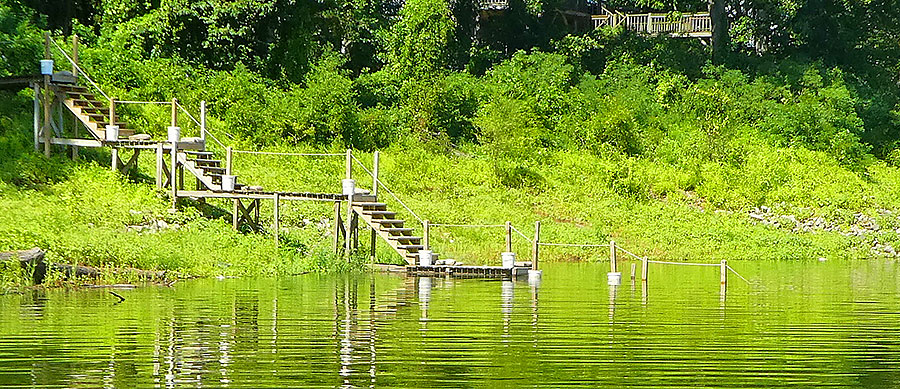
White bass
Lake Yucatan is also well known for its excellent white bass fishing. Lachney said the white bass will feed with the largemouth bass along the bank when the river gauge falls below 22 feet.
“But when the water drops to 12 or 13 feet, the white bass tend to move out into the main lake and school over shelves that are 40 to 45 feet deep,” he said. “They’ll hang out in the deep water but come up to feed on schools of shad that are near the surface.”
One way to find the hard fighting fish is to troll a silver spoon or a Bandit Tennessee Shad color crankbait.
Another way is to watch for the white bass to churn the surface as they slash away at schools of shad. To avoid spooking the bass, stop short of the frenzied activity and use the trolling motor to close within casting distance.
If the schooling white bass do disappear, be patient, stay put for awhile and keep watch because they’ll usually resurface not far away.
Lachney also recommended looking for white bass around large concrete slabs that have been put along the bank to stop erosion. Mrs. Lachney agrees and said there is a reason why the white bass are there.
“They like to get over concrete because plankton grows on it and attracts baitfish, and the white bass feed on them,” she said.
The underwater mound out from the culvert mentioned earlier will also hold white bass when the water is falling.
According to Lachney, “When water is draining out of the backswamp, it brings bait into the lake. You can catch both species of bass, crappie, catfish and anything else right there when it’s right.”
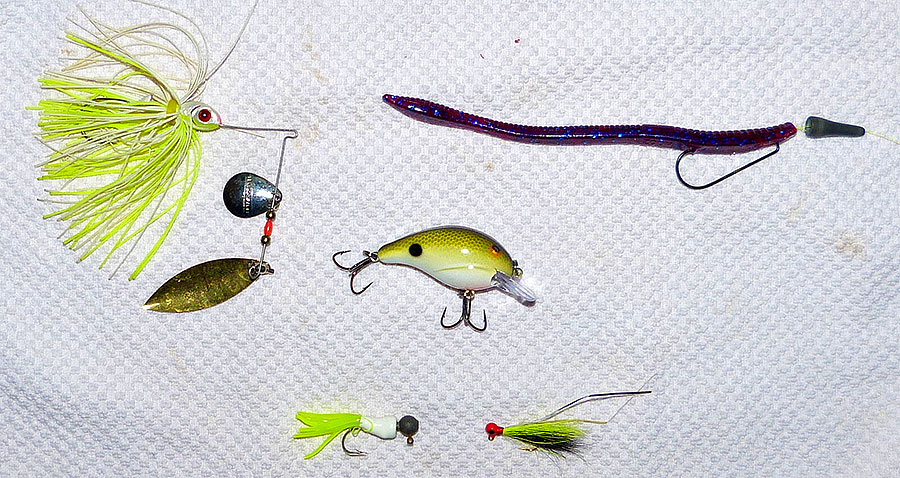
Crappie
Year in and year out, Lake Yucatan produces some huge crappie (aka white perch or sac-a-lait). Lachney recommended several ways to find them.
On the deeper Yucatan Landing side of the lake, most of the camps have steps that go down to docks. If the water is above pool stage (9 feet on the Vicksburg gauge), many of these steps extend under the water.
These steps and docks hold a lot of crappie, but not all steps are equal.
“Look for the steps that appear rather dilapidated,” Lachney said. “For some reason, the type of wood makes a difference in how good the fishing is. Find the end of it underwater and then work your way up the steps towards the bank.”
Robbie Myars is a Mississippi fisherman who launches on the Mississippi side of the river and enters Lake Yucatan by an outlet known as the “chute.” He knows about fishing for crappie around the steps and docks.
“I invest a lot of time in Livescope and have found that the best docks are the ones with some structure around them,” he said.
Once you locate these honey holes, they will produce trip after trip.
Another way to catch crappie is to fish on the shallower side of the lake across from the landing when the water is high.
“The old timers like to fish around the green willow trees in 10 to 13 feet of water,” Lachney said. “You have to fish right up on the tree, maybe four inches away, with a jig, shiner or a jig and shiner combination.”
Fishing around dead stickups can also be good.
“When leaving the ramp, go up the lake to the left to where it splits into two channels,” Lachney said. “There’s a shallow flat between the two channels with a lot of dead stickups the old timers call ironwood. That’s a good place to fish, especially in the hottest part of a summer day. Fish about three feet deep around the ironwood. For some reason, they don’t bite as well on an overcast day, so go when it’s clear, sunny and burning up.”
Myars agreed that some of the best crappie fishing is around the ironwood during the heat of the day.
“One very hot summer day, I tore them up on the shallow side of the lake fishing around dead stick ups in just 2 feet of water,” he said.
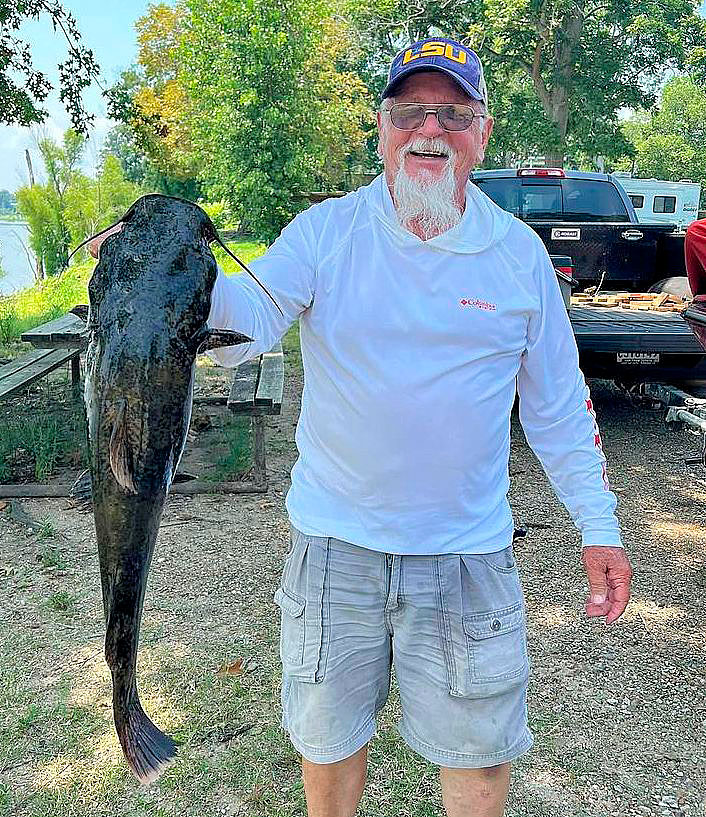
For crappie, both Myars and Lachney recommended using jigs with some chartreuse in them. Myars prefers a white and chartreuse jig, while Lachney said, “A chartreuse jig with red head is always good or a hair jig with a red band. Another good one is a chartreuse jig with a blue band or red head.”
So, grab some baits and keep an eye on the Vicksburg river gauge. When the water gets right, head to Louisiana’s Yucatan for a fisherman’s version of fun and relaxation.
Yucatan steeped in history
During the 19th century, what is now Lake Yucatan was a large, looping bend of the Mississippi River known as Yucatan Point. Its name came from the Yucatan Plantation that was located inside the bend. In 1929, however, a shifting of the Mississippi and Big Black rivers cut off the bend and left it as an oxbox lake.
One of the added bonuses of fishing Lake Yucatan is that you can access the Mississippi River from it. If the Vicksburg gauge is above 10 feet, you can enter the river by way of the “chute,” a 2-mile-long bayou at the lake’s southern end. If you fish Yucatan or hear anyone mention it, you can bet “the chute” will come up in the conversation.
Catfishing is very good in the chute but you sometimes have to move around a bit to find them. Huge blue cats can also be pulled out of the deep Mississippi River holes, and in the late spring the white bass action is hot where water flows through the rock jetties.

